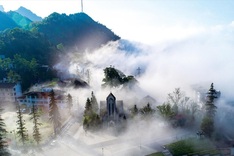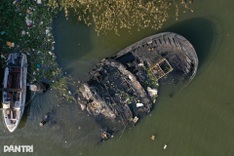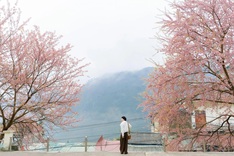
Inside the Vinh Moc Tunnels in Quang Tri Province
Located in Cua Tung Commune in the central province of Quang Tri, the Vinh Moc Tunnels are one of Vietnam's most remarkable historical sites, attracting both domestic and international tourists. The complex is the most expansive and iconic among 114 tunnel systems built across the region during the resistance against US forces between 1965 and 1967.
Historical records show that nearly half a million tonnes of bombs were dropped on this area from 1965 to 1972. In response, local people dug an extensive network of trenches and tunnels spanning 142 kilometres to survive and continue resistance efforts.
According to tour guide Phan Mai Phuong, the Vinh Moc Tunnels were constructed on coastal basalt hills in Vinh Moc village in early 1966 and completed in late 1967. The tunnels feature 13 entrances, six of which lead to the hills and seven to the sea, designed for ventilation and emergency evacuation.

Visitors at an entrance to Vinh Moc Tunnels
The tunnel features a domed structure, measuring 1.7 metres high and 1.2 metres wide, and is divided into three levels that range from 8 to 23 metres deep. The first two levels were used for living quarters, while the third stored food and weapons and facilitated supplies to Con Co Island and the southern battlefield.
Vinh Moc's tunnel system comprises more than one kilometre of main corridors and numerous branches, designed to resemble an underground village. Along the tunnel walls, 86 two-square-metre family shelters were carved out, each accommodating three to five people.
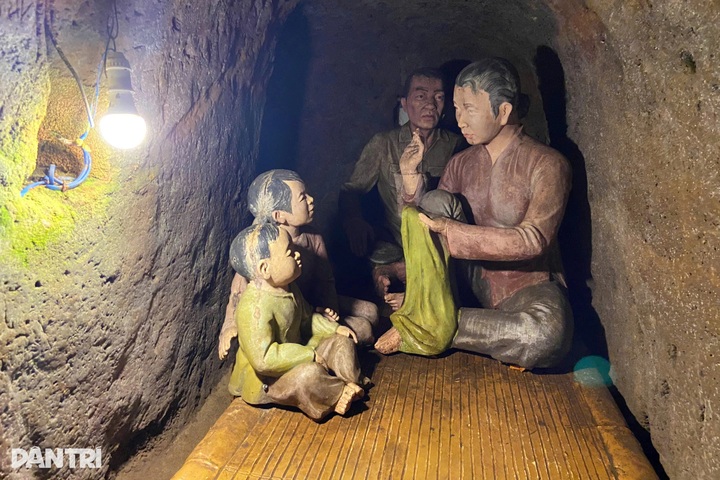
"These 'family shelters' typically housed only one or two people from each household to avoid mass casualties if the tunnel was struck," said Phuong.
More than a shelter, the Vinh Moc Tunnels were equipped for daily life and resistance. They included three freshwater wells, a 50-seat meeting hall, a maternity room, a surgery room, kitchens, bathrooms, toilets, and even shelters to withstand the impact of bunker busters.
Citing resident Ho Van Triem, now 90 years old, the tunnel system was built entirely by hand. People worked in shifts, women carried soil out in woven baskets, while men dug with tools made from bomb fragments. Wood from dismantled homes was used to reinforce tunnel entrances.
"In the tunnels, parents often sat while their children lay down to sleep. Food was scarce, consisting mostly of one meal of cassava, sweet potatoes, or rice cooked for the entire day. When bombing paused, we would surface to tend crops," Triem recalled.
At one point, over 1,200 people lived in the Vinh Moc Tunnels. Over nearly 2,000 days of intense warfare, not a single life was lost underground. Remarkably, 17 babies were born in the tunnels, a testament to the resilience of life even in the harshest conditions.
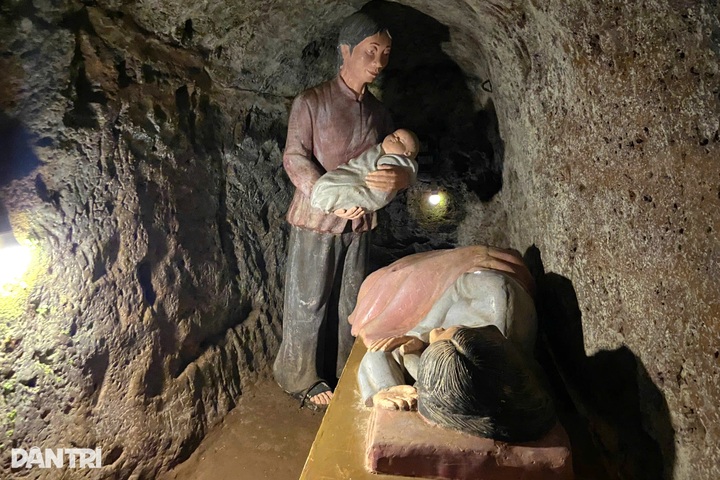
Ho Thi Du, now 58, was one of the 17 babies born in the tunnels. "My mother gave birth to me during the rainy season. Water seeped through the earthen walls, and neighbours had to stretch nylon sheets to keep us dry. I was wrapped in an old shirt. Life was difficult and food was scarce," she said, with tears in her eyes.
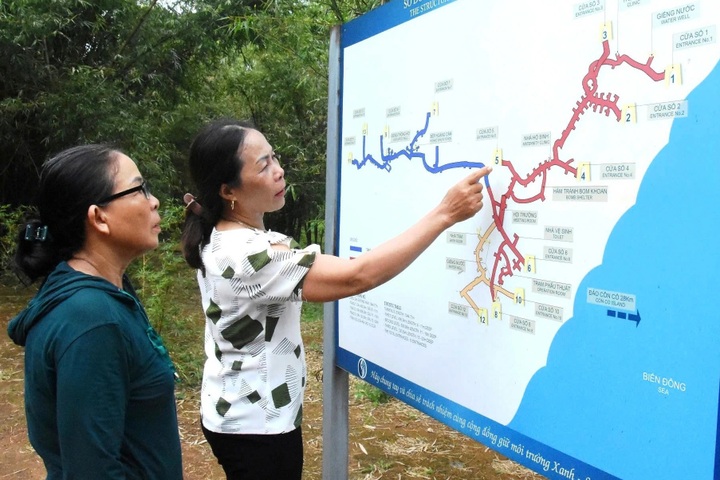
Ho Thi Du (in white shirt) during a visit to the Vinh Moc Tunnels where she was born.
Phan Truong Dinh, Head of the Vinh Moc Tunnel Historic Site Management Board, said the site welcomes around 50,000 visitors annually. While older generations and war veterans often visit, the site has become an increasingly popular destination for historical discovery among young people.
In recognition of its historical significance, Vinh Moc Tunnels and the Vinh Linh underground village system were designated a Special National Historical Site in 2014.

